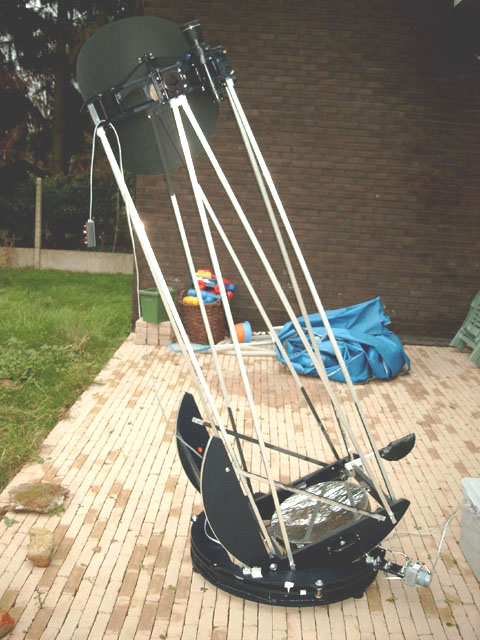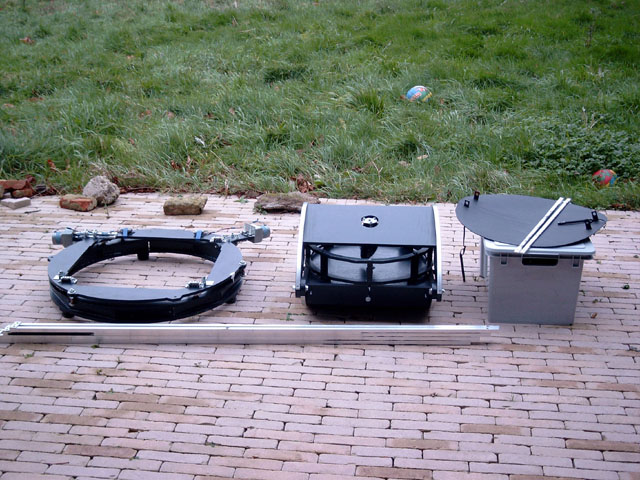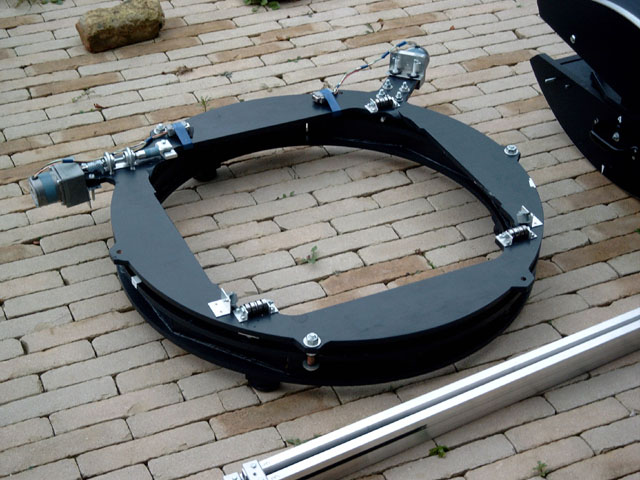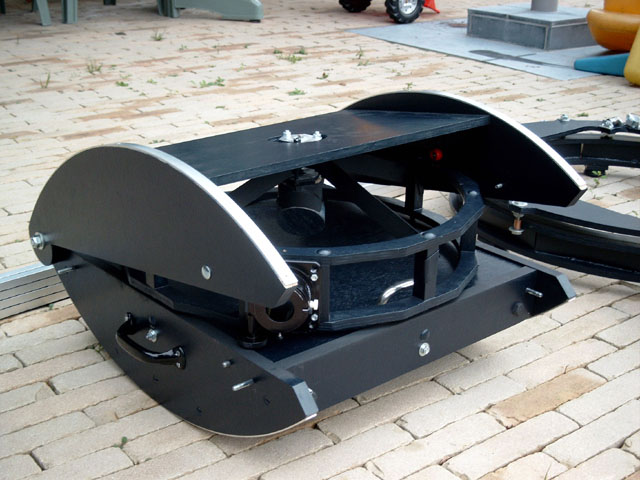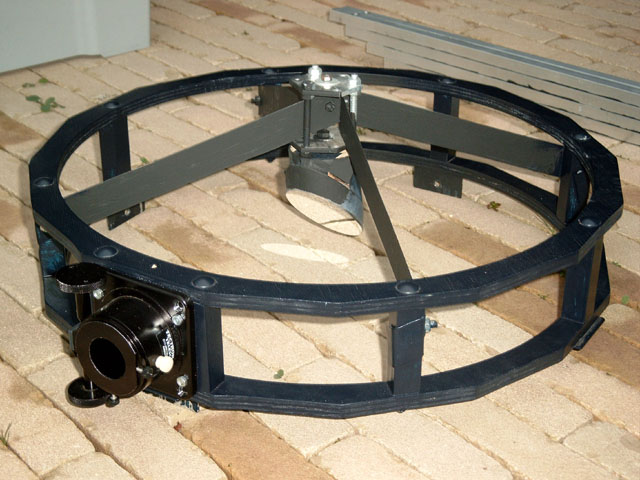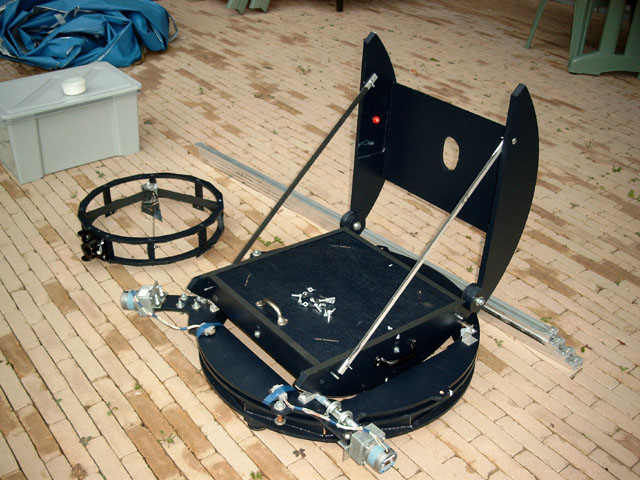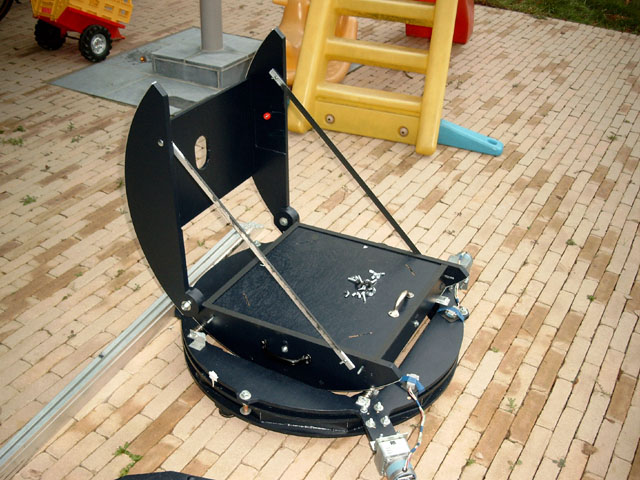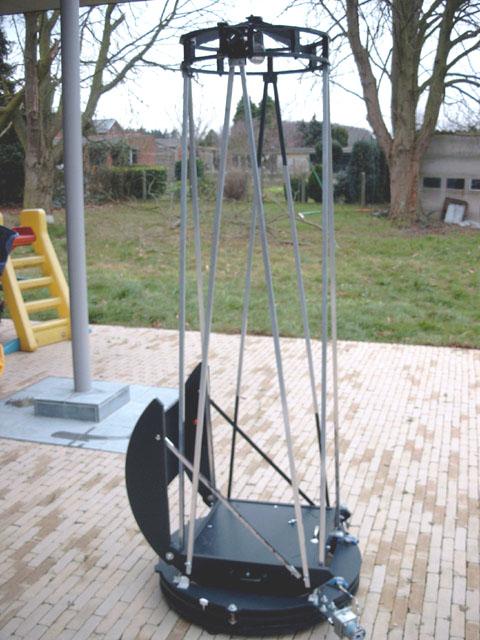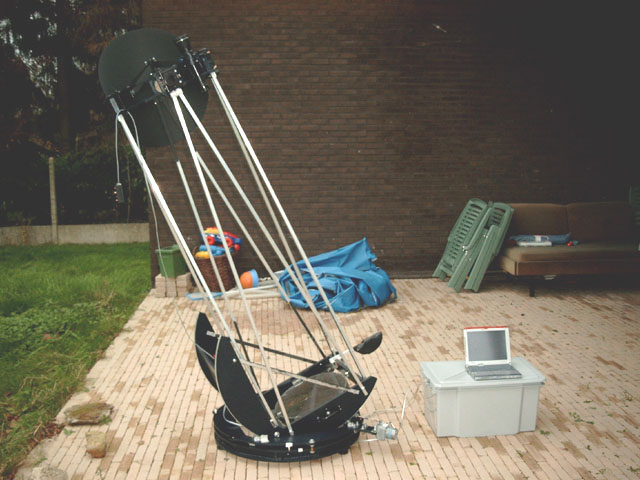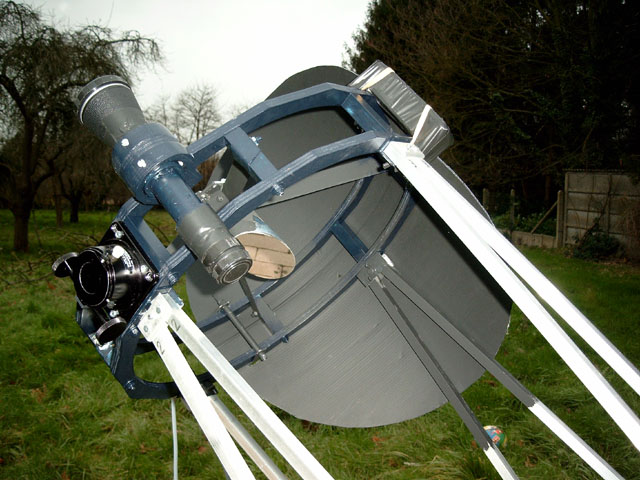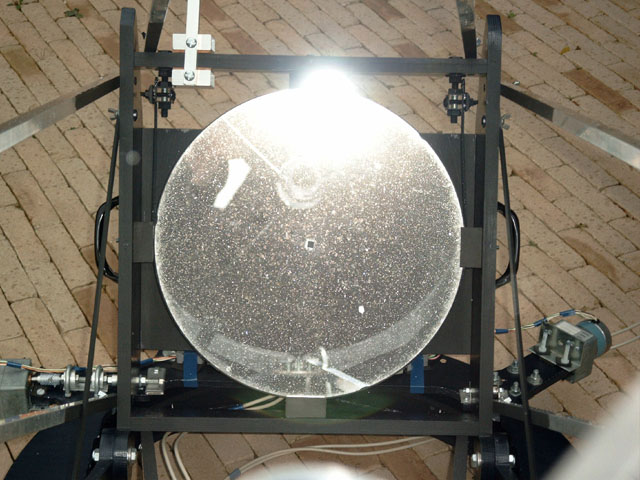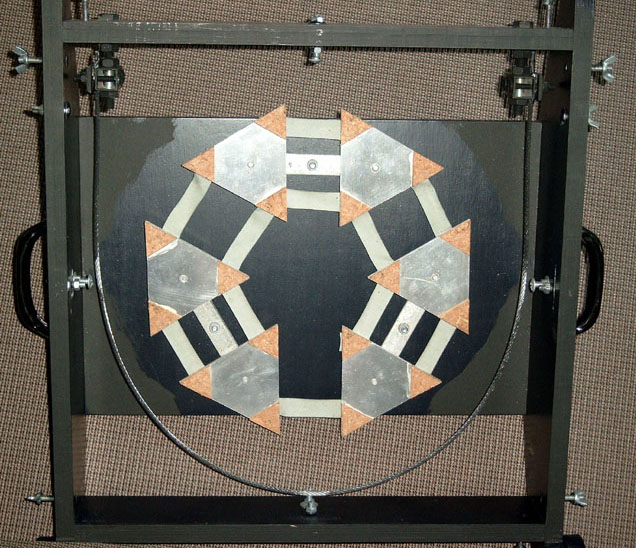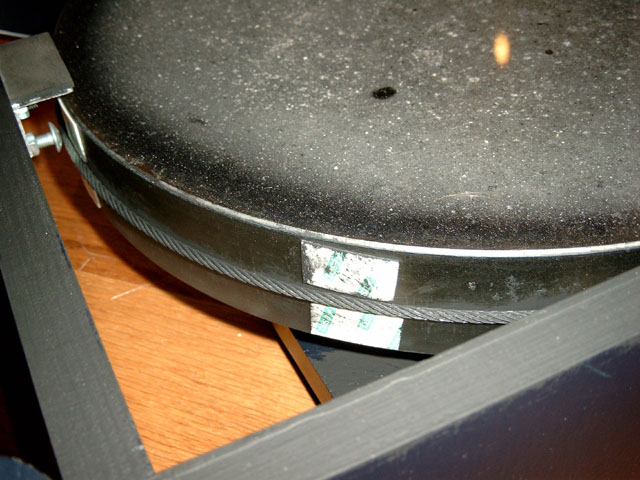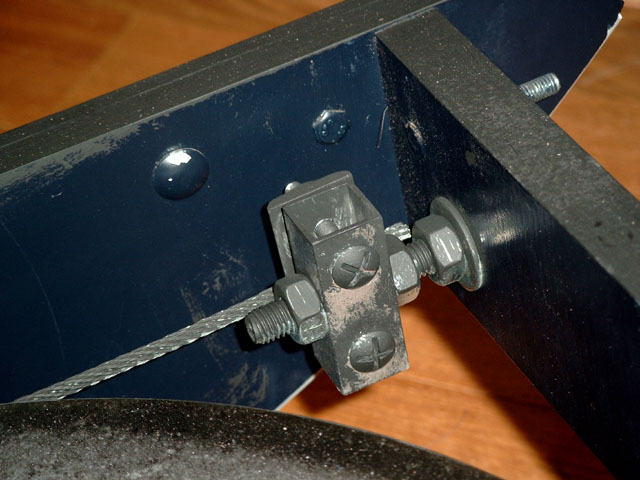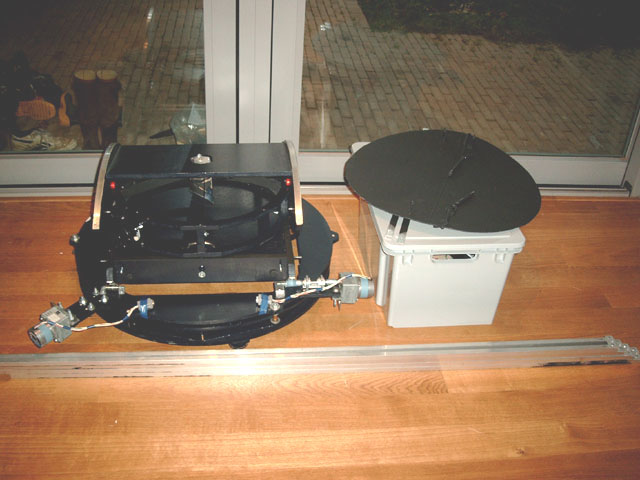|
||||
406 mm (16 inch) f/5 Computer Controlled Alt-Azimuth TelescopeFebruary 26, 2008: a new 16" mirror from Mike Lockwood arrives!
Below some pictures of my 406 mm (16") f/5 telescope.This mirror is only 1.4" thick instead of the original 2" which makes it about 4 kg (9 lbs) lighter. I had anticipated this change from the outset by making the telescope bottom-heavy and using a 1 kg weight on the upper cage. Now the counterweight is no longer required and in total the telescope has become 5 kg lighter. At my request, Mike made the FL slightly shorter at 2000 mm instead of the original 2040 mm so that I can reuse the truss poles - just need to cut them slightly shorter. In fact the mirror is now f/4.9 instead of f/5. The first two observing sessions showed that the quality of the mirror is excellent. Together with the new mirror, I also decided to upgrade the focuser (replacing the 1990 Tectron R&P focuser by a JMI Ev-1) and the secondary mirror. The slightly shorter focal length and higher focuser meant that the 2.6" secondary was rather underdimensioned. I'm now long past the folly of going to extremes to minimize the secondary and decided on a comfortable 3.1" minor axis (still only 19% central obstruction). The 3.1" Antares Optics 1/30 wave secondary mirror arrived a week after order, and has now been installed. The text and pictures below are for the old configuration, so this whole page requires an update. But first let's have some observing fun with it! The telescope is very compact and portable, weight of the parts is as follows:
| ||||
|
